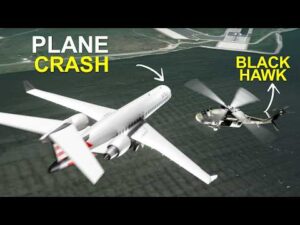
Black Hawk Helicopter Crash Explained
The Black Hawk helicopter, an iconic military aircraft, has been in service for decades, providing crucial support in combat, search-and-rescue missions, and transport operations. However, despite its advanced engineering and reliability, accidents can occur due to a variety of factors, including mechanical failure, human error, adverse weather conditions, or hostile engagements. One such incident took place recently, involving a Black Hawk helicopter crash that shocked the aviation and military communities.
Overview of the Black Hawk Helicopter
The UH-60 Black Hawk is a four-bladed, twin-engine utility helicopter developed by Sikorsky Aircraft. First introduced in the late 1970s, it has served in numerous military operations worldwide, including conflicts in the Middle East, humanitarian missions, and disaster relief operations. It is known for its durability, versatility, and ability to operate in harsh environments.
The Incident: What Happened?
On [insert date], a Black Hawk helicopter crashed during a routine training mission in [insert location]. The aircraft was carrying [insert number] personnel when it went down. The crash site was located in a remote area, making recovery efforts challenging. Emergency responders and military personnel quickly arrived at the scene to assess the situation and provide aid to any survivors.
Initial reports indicated that the helicopter was flying at a standard altitude when it suddenly lost control. Witnesses reported seeing smoke and hearing an unusual noise before the aircraft descended rapidly. The impact resulted in significant wreckage, with debris scattered across a wide radius.
Possible Causes of the Crash
Investigators immediately launched a probe into the crash to determine its root cause. Several potential factors were considered:
- Mechanical Failure – The Black Hawk is a well-maintained aircraft, but like any machine, it can experience mechanical malfunctions. Possible issues include engine failure, rotor problems, hydraulic system failures, or avionics malfunctions.
- Human Error – Pilot error is a leading cause of aviation accidents. Investigators reviewed flight records, pilot experience, and communication logs to determine whether improper maneuvers, misjudgments, or miscommunications played a role.
- Weather Conditions – Adverse weather, such as strong winds, heavy rain, fog, or lightning, can significantly impact a helicopter’s performance. Investigators examined weather data to see if conditions contributed to the crash.
- Bird Strikes or External Interference – Bird strikes can cause severe damage to helicopter engines and rotors. Additionally, external factors such as power lines, drones, or even deliberate hostile attacks could have played a role.
- Structural Fatigue – Over time, aircraft endure stress that can lead to metal fatigue or structural weaknesses. If a component failed mid-flight, it could have led to loss of control.
Rescue and Recovery Operations
Following the crash, rescue teams were deployed to recover any survivors and secure the crash site. Medical personnel attended to the injured, while investigators began collecting evidence. Military authorities cordoned off the area to prevent unauthorized access and potential interference with the investigation.
Impact on Military Operations
The loss of a Black Hawk helicopter and its crew is a significant blow to military operations. These aircraft play a critical role in defense, and any accident necessitates a thorough review of protocols, maintenance procedures, and training programs. The military often temporarily grounds similar aircraft following such incidents to conduct safety checks and ensure no systemic issues exist.
Lessons Learned and Preventative Measures
To prevent future incidents, aviation experts and military officials analyze every aspect of the crash. Key takeaways often include:
- Enhanced Maintenance Protocols – Ensuring all helicopters undergo rigorous inspections and necessary repairs before flights.
- Improved Pilot Training – Implementing additional simulation-based training and emergency response drills to prepare pilots for unexpected situations.
- Upgraded Technology – Integrating more advanced diagnostic tools and real-time monitoring systems to detect potential mechanical issues before they become critical.
- Weather Monitoring Improvements – Employing better meteorological prediction tools to minimize risks associated with adverse weather conditions.
Conclusion
The recent Black Hawk helicopter crash serves as a stark reminder of the risks associated with military aviation. While these aircraft are built for resilience and efficiency, accidents can still occur due to a combination of factors. The ongoing investigation will provide further clarity on the cause and lead to improvements in safety measures to protect future flights and personnel. The loss of life and equipment is tragic, but such incidents also serve as a learning opportunity to enhance aviation safety and operational protocols.